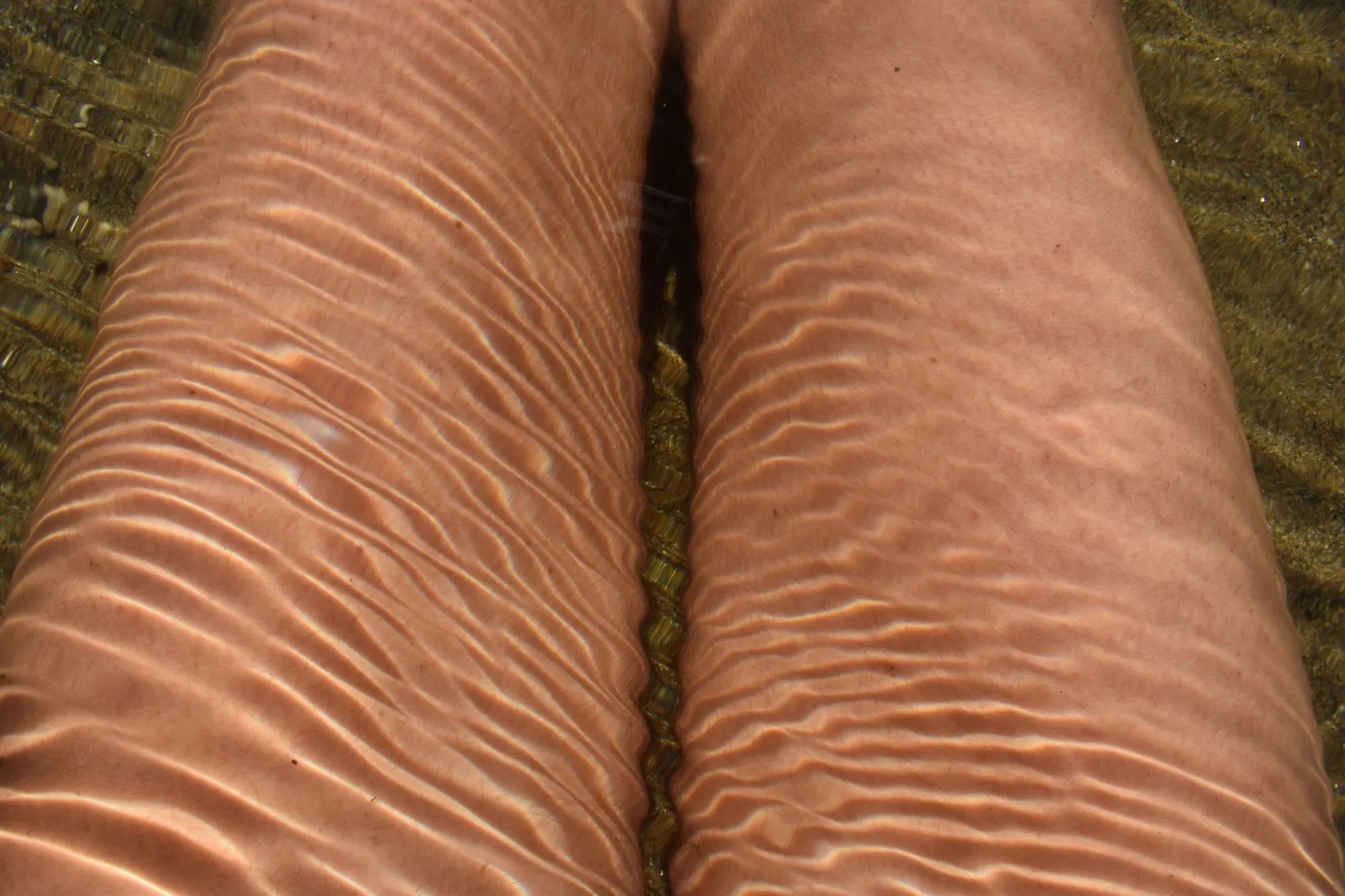The fashion industry is accountable for approximately 4% of global freshwater withdrawals, uses up to 79 trillion litres of water annually and contributes to about 20% of the global industrial wastewater. Approximately 2700 litres of water are needed for one t-shirt, from the irrigation phase to the production and scientists estimate that textiles produce 35% of the microplastic pollution in the world’s oceans, which would make textiles the largest known source of marine microplastic pollution.
Despite various statistics, it is near impossible to accurately sum up fashion’s impact on water – this is not helped by a lack of transparency upstream of the value chain, not only challenging identification of impact but also the necessary actions. [1]
Problem Sources
There are many sources of pollutants in textile wastewater, from agricultural cultivation, cleaning of machines after use, textile pre-treatment, and laundering processes. In total, over 1900 chemicals have been identified that can be involved in textile production processes. [3] Below are just a few:
Cotton Farming
The most widely used natural fabric for clothing, cotton requires large amounts of water for irrigation and treatment, depleting local freshwater and groundwater resources. To increase the production required to fulfil this high demand, pesticides and fertilisers are often used to increase cotton output.
Synthetic Fabric Production
Wastewater from the production of synthetic fabrics, which requires 70 million barrels of oil per year, releases lead, arsenic, benzene and other pollutants into water sources.
Contaminated Wastewater
Fabric dying and treatment practices generate about 20 percent of the world’s wastewater. The textile finishing and dying process infuses many chemicals into the water, including oil, phenol, dyes, pesticides and heavy metals, like copper, mercury and chromium. The polluted water can make its way to nearby streams and groundwater and may then be used for irrigating crops, therefore contaminating food sources with carcinogenic chemicals.
Microfibre Pollution
Little visible but highly dangerous, the textile industry’s pollution of water sources with microfibres (tiny synthetic fibres) has worried environmentalists all over the world, especially since these can spread across rivers and oceans. Some studies have estimated that up to 85 percent of human-made pollution on shorelines is from microfibres, while others have warned that half a million tonnes of microfibres are discarded into the oceans annually. These fibres are released not only during the production process, but also after purchasing, when clothes are worn and washed. Microfibre pollution from synthetic materials can take hundreds of years to decompose and can disrupt underwater ecosystems. In fact, traces of microfibres from synthetic sources, like polyester and nylon, have been found in fish and other seafood destined for human consumption.
Solution Resources
Below are some of the actions found in our research:
Sustainable Cotton Farming
The World Wildlife Fund has started the Better Cotton Initiative, which seeks to promote sustainable cotton farming that minimises its impact on the environment. The enterprise assists farmers in sustainable water management, reducing agrochemical use and promoting decent work environments. Shopping from retailers that source their cotton from certified organic cotton vendors can help promote sustainable farming and reduce their own impact on the environment.
Sustainable Materials
To reduce their environmental impact, consumers should choose garments made of natural fibres that require less water in the manufacturing process, such as linen or organic cotton, and when possible, reduce the purchase of synthetic fibres that release microfibres, such as nylon and polyester. Customers can look for clothing with certifications of limited chemical content, such as OEKO_TEXⓇ or GOTS.
Reduce Consumption and Production
While fashion is a powerful method of self-expression and the fashion industry has been integral to economic growth and development, the current rates of consumption and production cannot continue without exacerbating the dangerous consequences for the environment. Consumer culture should shift towards long-term use of quality garments, repairing or donating older garments and purchasing second-hand clothing. On the production side, companies will have to decouple themselves from the expectation of rampant growth and focus instead on providing quality products that stay in style longer. [2]
Our Choices
Vestya Shop is conscious about these problems and we aim to be part of the change so we are committed to search, promote and implement solutions that help minimise the impact of the fashion industry in our environment. That was the main reason for us to choose a Print on Demand business model in opposition with the mass production that has characterised the commercial sector, and more precisely the fashion sector, until now.
In our catalogue we offer products made of two different types of ecological textiles:
100% organic cotton
Characterised by a healthy culture requiring a much more reasonable water consumption (on average 40 litres for a T-shirt compared with 2700 litres in non organic cotton),
Recycled textiles
In the midst of the whirlwind of unbridled consumption that the textile industry represents today, recycled cotton and polyester embody – ironically – a breath of fresh air. The principle? Conceive textile consumption as a circular process, by reusing fibres from clothing scraps (in the case of recycled cotton) or by transforming non-renewable materials like plastic bottles into (recycled polyester).
And all our products are printed on the textile using water-based inks, 100% eco-certified by OEKO-TEX® ECO PASSPORT and by the very serious GOTS 5.0 label, and are VEGAN.
We are always looking for better alternatives and ways to improve, so if you have any suggestion, please get in touch!
[1] Fashion’s Water Consumption and Pollution https://globalfashionagenda.org/news-article/world-water-day-2022-fashions-water-consumption-and-pollution/
[2] How the fashion industry pollutes our water https://www.fairplanet.org/story/how-the-fashion-industry-pollutes-our-water/
[3] The Environmental Impacts of Fast Fashion on Water Quality: A Systematic Review – https://www.mdpi.com/1563662
[4] Our – real – environmental commitments https://www.tpop.com/en/our-real-environmental-commitments/




